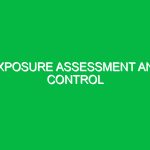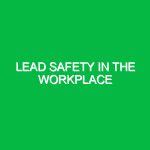Respirable crystalline silica awareness is a crucial topic within the Health, Safety, and Environment (HSE) domain. It focuses on understanding the risks associated with silica dust exposure and implementing measures to protect workers and the environment. This article aims to shed light on the dangers posed by respirable crystalline silica, the regulations governing its management, and best practices to mitigate associated risks.
Understanding Respirable Crystalline Silica
Respirable crystalline silica refers to tiny particles of silica that are small enough to be inhaled into the lungs. Silica, a natural mineral found in materials like sand, quartz, and granite, is commonly encountered in construction, mining, and manufacturing industries. The concern arises when these materials are disturbed through activities such as cutting, grinding, or drilling, releasing fine silica dust into the air.
The inhalation of respirable crystalline silica can lead to serious health issues, including silicosis, lung cancer, chronic obstructive pulmonary disease (COPD), and kidney disease. The World Health Organization (WHO) has recognized these dangers, emphasizing the need for increased awareness and proactive measures in workplaces where silica exposure is a concern.
The Relevance of Respirable Crystalline Silica Awareness in HSE
In the HSE domain, awareness of respirable crystalline silica is paramount for ensuring the safety and health of workers. It is not merely a regulatory requirement but a moral obligation to protect individuals from preventable diseases. Companies that prioritize silica awareness can create healthier work environments, reduce absenteeism, and improve overall productivity.
For example, in the construction industry, workers often encounter silica dust when cutting concrete or stone. A construction manager who emphasizes silica awareness can educate workers about the risks, implement control measures, and ultimately foster a culture of safety. This proactive approach not only protects employees but also enhances the company’s reputation and compliance with health regulations.
Identifying Hazards and Risks Associated with Respirable Crystalline Silica
To effectively manage respirable crystalline silica, it is essential to identify the potential hazards and risks associated with its exposure. Primarily, these risks arise during activities that disturb silica-containing materials. Key operations include:
- Cutting and Grinding: Activities such as cutting tiles, grinding stone, or sawing concrete can release significant amounts of silica dust.
- Drilling: Drilling into rock or concrete generates dust that can be inhaled, posing serious health risks.
- Excavation: Moving earth or rock can disturb silica deposits, leading to airborne particles.
- Demolition: This process often involves breaking down concrete and masonry, which can release high concentrations of silica dust.
Each of these activities creates a risk of inhaling respirable crystalline silica, with the potential for long-term health effects. The severity of these health effects depends on the concentration of silica dust in the air, the duration of exposure, and the individual’s susceptibility.
Health Risks Linked to Silica Exposure
Exposure to respirable crystalline silica can result in several serious health conditions. Silicosis, a lung disease caused by inhaling silica dust, can develop over time, leading to inflammation and scarring of lung tissue. This condition can be debilitating and is often irreversible.
Moreover, the International Agency for Research on Cancer (IARC) has classified crystalline silica as a Group 1 carcinogen, indicating sufficient evidence of its carcinogenicity in humans. The risk of lung cancer increases with the level and duration of exposure to silica dust.
In addition to silicosis and lung cancer, chronic exposure can lead to other respiratory issues such as COPD, which is characterized by breathing difficulties, chronic cough, and reduced lung function. Kidney disease has also been associated with silica exposure, further underscoring the importance of awareness and prevention measures.
Safety Precautions and Best Practices
To minimize the risks associated with respirable crystalline silica, it is vital for employers and workers to adopt effective safety precautions and best practices. Here are several actionable strategies:
1. Conduct Risk Assessments
Employers should regularly perform risk assessments to identify tasks that may generate silica dust. Understanding exposure levels can guide the implementation of appropriate controls.
2. Implement Engineering Controls
Engineering controls are crucial in minimizing exposure. These may include:
- Water Suppression: Wetting down materials before cutting or grinding can significantly reduce dust generation.
- Local Exhaust Ventilation: Installing ventilation systems to capture dust at the source can help maintain a cleaner air environment.
- Enclosures: Using physical barriers around operations that generate dust can limit the spread of silica particles.
3. Utilize Personal Protective Equipment (PPE)
When engineering controls are insufficient, personal protective equipment becomes essential. Workers should be equipped with:
- Respirators: Properly fitted respirators can protect against inhaling silica dust, especially during high-exposure tasks.
- Protective Clothing: Wearing appropriate clothing can help prevent skin exposure to silica dust.
4. Provide Training and Education
Training workers about the risks of respirable crystalline silica and the importance of safety measures is crucial. Regular training sessions can enhance awareness and ensure that employees understand how to protect themselves and their colleagues.
5. Implement a Hygiene Program
A hygiene program that includes washing facilities and break areas away from dust-generating operations can reduce the risk of exposure. Encouraging workers to wash their hands and face before eating or drinking can help prevent inhalation of dust particles.
Regulations and Standards Governing Respirable Crystalline Silica
Several regulations and standards exist to manage respirable crystalline silica exposure effectively. In the United States, the Occupational Safety and Health Administration (OSHA) has established permissible exposure limits (PELs) for silica dust. As of 2016, the PEL for respirable crystalline silica is set at 50 micrograms per cubic meter of air, averaged over an eight-hour workday.
Employers are required to implement a written exposure control plan, which includes identifying tasks that expose workers to silica, implementing engineering controls, and providing training. Additionally, monitoring air quality to ensure compliance with established limits is a critical component of silica management.
Other countries also have similar regulations. For instance, the European Union has set strict exposure limits and requires member states to adopt appropriate measures to protect workers from silica exposure. Understanding and adhering to these regulations is essential for maintaining compliance and safeguarding worker health.
Conclusion: The Importance of Respirable Crystalline Silica Awareness
Ultimately, respirable crystalline silica awareness stands at the intersection of health, safety, and environmental protection. By understanding the risks associated with silica dust, implementing effective control measures, and complying with regulatory standards, employers can create safer workplaces. Workers, too, must engage in proactive behaviors to protect themselves and their peers.
As a construction manager once shared during a safety conference, “It’s not just about the regulations; it’s about the lives we’re protecting.” This perspective underscores the importance of fostering a culture of awareness and responsibility around respirable crystalline silica. With collective efforts, we can mitigate risks and ensure a healthier future for all in the working environment.


